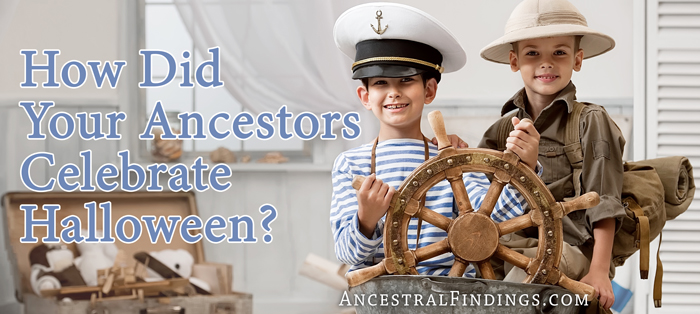April 1st often arrives with a mixture of groans and eye-rolls, especially for those who have been on the receiving end of thoughtless pranks. While some brush it off as harmless fun, others know the sting of being caught off guard—sometimes in ways that leave lasting discomfort. Behind the jokes, however, is a centuries-long story filled with cultural shifts, misunderstandings, and evolving attitudes toward humor and public behavior.
Whether you appreciate the tradition or dislike it entirely, April Fools’ Day has a rich and complicated past worth exploring. This article digs deep into its history, how it spread globally, the meanings it has taken on over time, and the growing pushback against it in modern years.
A Calendar Shift and the Roots of Confusion
One of the most cited theories about the beginning of April Fools’ Day dates back to the 16th century, when the Gregorian calendar replaced the Julian calendar. Under the older Julian system, New Year’s Day was often observed around the spring equinox, with celebrations lasting into early April.
However, when Pope Gregory XIII introduced the Gregorian calendar in 1582, New Year’s Day was officially moved to January 1st. Word didn’t travel quickly in those days, and many people—especially in rural areas—either hadn’t heard about the change or refused to accept it. According to legend, those who continued celebrating the “old” New Year in late March and early April were labeled fools by those who had adopted the new calendar. The mocking became tradition, with trickery and pranks becoming a yearly occurrence.
While this story is often repeated, it’s worth noting that there’s no solid evidence tying this moment to the creation of April Fools’ Day. But it does illustrate a larger theme: much of the day’s identity comes from misunderstanding, miscommunication, and ridicule.
Echoes from Ancient Festivals
Others believe April Fools’ Day is rooted in pre-Christian or Roman festivals. Some scholars connect it to Hilaria, celebrated in ancient Rome at the end of March. During Hilaria, people, including authority figures, wore disguises and mocked each other. It was a day of reversal and satire—a temporary permission slip to laugh at those usually deemed untouchable.
Similarly, festivals like Holi in India and Sizdah Bedar in Persia involve mischief and merriment at the turn of the seasons. While these events have more spiritual or seasonal meaning than April Fools’ Day as we know it, they do suggest that springtime has long been associated with playful social disruption.
April Fools’ Across Cultures
By the 18th century, April Fools’ Day was widely celebrated in Europe, with each region adding its twist.
In France, pranksters would stick paper fish to people’s backs, calling them “poisson d’avril,” or April fish—a term still used today for someone who’s been fooled. In Scotland, the holiday stretched over two days: the first was for sending people on absurd errands (“hunting the gowk”), and the second was for jokes involving the backside—yes, it’s where the infamous “kick me” sign has roots.
In England, pranks were traditionally limited to the morning. If someone played a trick after noon, they were the fool instead.
The migration of these customs into North America in the 19th century helped establish the version of April Fools’ Day we know today—one in which anyone can be a target and almost any trick is considered fair game.
Media Hoaxes and Mass Pranks
By the 20th century, April Fools’ Day had entered the mainstream. Radio stations, newspapers, and later, television networks began orchestrating elaborate hoaxes. Some were clever and funny, while others sparked confusion, outrage, or fear.
In 1957, the BBC aired a segment about spaghetti trees in Switzerland, prompting viewers to call in and ask how they could grow their own. In 1996, Taco Bell claimed to have bought the Liberty Bell and renamed it the “Taco Liberty Bell,” upsetting many Americans before it was revealed to be a joke. More recently, Google has regularly rolled out April 1st features, like Google Translate for animals or fake new services, adding to the day’s digital flair.
But as the internet age progressed, pranks became harder to spot and easier to spread. Misinformation, hoaxes, and fake news already cause problems throughout the year, and adding a day dedicated to trickery has made some people question whether April Fools’ Day still serves a meaningful purpose.
The Harm Behind the Humor
Despite its lighthearted reputation, April Fools’ Day is not universally loved—and for good reason. While some pranks are harmless or clever, others cross personal and emotional boundaries.
People have been fired over fake HR emails. Children have gone home in tears after being targeted at school. And in the digital age, some jokes have taken on serious consequences, from fake announcements about health scares to fabricated political news. What’s intended as humor often lands as humiliation.
The criticism isn’t new. Newspapers as early as the 1800s questioned the need for the holiday, calling it “an excuse for public cruelty.” In recent years, social media has amplified both the reach and the backlash. Some companies have entirely sworn off April Fools’ jokes, citing customer confusion and a lack of trust.
Why It Still Exists
So why does it persist?
For some, April Fools’ Day offers a sense of levity—a temporary break from routine. Even for a moment, the idea of subverting expectations appeals to human nature. Historically, prank days gave people a chance to push back, gently, against systems or roles they couldn’t usually question.
Still, there’s a growing awareness that humor has its limits. What was once funny can now feel outdated or inappropriate. In a world filled with real misinformation and serious challenges, a day that encourages lying—even in jest—doesn’t sit well with everyone.
Conclusion: Rethinking the Meaning
April Fools’ Day has a long and complicated history. It’s a day shaped by ancient customs, cultural transitions, and the evolving boundaries of humor. What began as a tradition tied to the seasons, calendar changes, and social inversion is now scrutinized.
For some, it’s still a source of fun. For others, especially those who have been humiliated or tricked one too many times, it’s a reminder that not all jokes are welcome.
And maybe, by understanding the history, we can find a way forward—one where respect and thoughtfulness come before the punchline.



